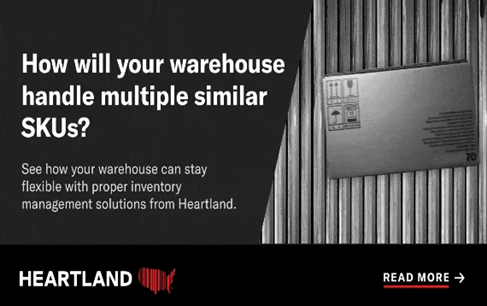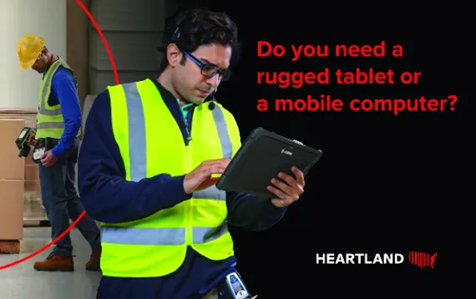
Let’s Keep Customer Loyalty at an All-Time High
Nov 20, 2023
The cost of attracting a new customer can be up to five times higher than the price of retaining one. As consumer demands shift in the Digital Age, supply chains strive to incorporate new systems that attract new business while nurturing customer loyalty with same-day shipping, real-time order tracking, and sustainability – each depending on accurate visibility within the supply chain. Dependable visibility leads to higher accuracy rates which translates to higher customer satisfaction levels. Nevertheless, the typical distribution center can see error rates as high as 3%, which may not seem detrimental until one considers that warehouses process thousands of orders per day. Studies estimate inventory errors drain up to $1.1 trillion worldwide after accounting for lost customers and correctional costs. In other words, visibility technologies like barcode scanning play a key role in preserving customer loyalty.
How Does Barcode Scanning Help Secure Loyal Customers
Manual inventory checks and cycle counts are not flawless. Fulfillment errors contribute to customer-facing issues such as delayed shipments and mis-picks. Fortunately, electronic data capture systems help improve loyalty by:
- Securing put-away accuracy – When products arrive at the receiving dock, barcode labels help identify SKUs and segment pallets for proper storage. Workers simply label inventory and scan barcodes to register their location and direct teams where to store products. Proper put-away sets teams up for success since they can quickly locate and retrieve stock later during order picking.
Related: See how automation simplifies inventory movement.
- Updating stock quantities quickly – Scanned barcodes connect data to your WMS or inventory management system (IMS). This data is later shared with retailers and consumers to notify them of in-stock products, enabling more sales and strengthening the bottom line. When customers can rely on a business to have the products they need, they are more likely to return and become loyal customers.
- Accelerating order picking - Barcode scanners accurately scan product barcodes, reducing errors and speeding up order fulfillment simultaneously. Higher throughput rates maximize profitability and enable teams to meet faster shipping speeds, further supporting customer loyalty efforts.
- Verifying the correct orders are ready for shipping – Automated quality checkpoints and truck loading software ensure the correct orders match shipping details recorded on the barcode label.
Anatomy of a Good Barcode Scanner
As technology matures, the anatomy of a barcode scanner has evolved to incorporate advanced features that offer greater speed, accuracy, and flexibility. While advanced devices may compile more intricate features, most barcode scanners are composed of:
- The Scanner Body - The body of a barcode scanner is typically made of a durable material, lightweight and easy to hold. The body is also ergonomically designed to fit comfortably in the user's hand and may include a trigger button or a touchpad for initiating scans. More rugged versions can include a protective boot around the entire device.
- The Scan Engine – Acting as the heart of the scanner, the scan engine uses a beam of light to read the barcode and transmit its data to a decoder. 2D imagers are becoming increasingly popular since they read damaged or poorly printed barcodes.
- The Decoder – After data passes through the scan engine, an embedded decoder interprets the data to be read by your WMS. The decoder software can be programmed to recognize a wide variety of barcode formats, such as UPC, EAN, Code 128, and QR codes.
- Connectivity – No electronic data capture system would be complete without connectivity. Wired scanners can be connected directly to a computer or other device using a USB or serial cable. Wireless scanners use Bluetooth or Wi-Fi to transmit data to a nearby computer or mobile device. Some barcode scanners also offer cellular connectivity, enabling them to transmit data over a cellular network.
- The Battery – Fast-paced warehouses may require battery lifecycles to last beyond traditional 8-hour shifts. Fortunately, advanced barcode scanners may be equipped with hot-swappable batteries to prevent downtime during charging.
What’s the Difference Between 1D and 2D Scanners?
Two of the most common types of barcode scanners used in the warehouse are 1D and 2D scanners. The main difference between these two types of devices is the amount of information each can process. A 1D scanner only reads linear barcodes, while 2D scanners capture both linear and 2D barcodes.
1D scanners are commonly used in retail environments and smaller businesses where barcodes hold less data. These devices read linear barcodes containing basic information such as product information, price, and manufacturer. Fast and efficient, 1D scanners can be ideal for replacing manual data entry, yet they are limited in the amount of information they hold and must be scanned from a specific angle to successfully capture the barcode.
On the other hand, 2D barcode scanners are more advanced and read both linear and 2D barcodes. They hold more information than a 1D scanner and are commonly used in warehouses for tracking inventory and managing operations. Because 2D barcodes can include images and more characters, they contain more complex data such as serial numbers, batch numbers, and expiration dates. This makes them ideal for tracking inventory and managing warehouse operations. Advanced 2D scanners are also capable of reading barcodes on a touchscreen, which is important for businesses that use mobile devices to manage their inventory.
Three Supporting Technologies that Complete Your Barcoding Solution
One of the many benefits of working with a strategic solution provider like Heartland is that they will be able to support your barcoding solution with labels, software, and enterprise-ready printing systems. Instead of focusing solely on hardware, your dedicated provider will also empower your solution with:
- Quality Labels – Printing media should be designed to match your application and storage environments to avoid early barcode fading and peeled edges. Label size and color also impact barcode legibility since high-contrast labels are easier to scan.
- Barcoding Software – Your solution provider can help evaluate your workflows to decide which barcode format best fits your goals. Barcode-generating software and data management systems work together to produce unique barcodes for your products.
- Enterprise Printers – Your barcode printer is essential to create tags in your busy workflows. Although industrial printers can produce larger volumes of labels, desktop and mobile printers are equally beneficial for printing labels in smaller spaces.
- Reliable Technical Support – Lastly, businesses can expect ongoing support and maintenance with an experienced team like AlwaysOn to prevent printer downtime, assist in label replenishment, and configure scanners and handheld devices to seamlessly interact with your WMS.
Barcoding solutions are essential for businesses looking to secure loyal customers and reduce error rates. For more information on how you can sustain maximized customer loyalty with dependable accuracy, contact our automation team.




